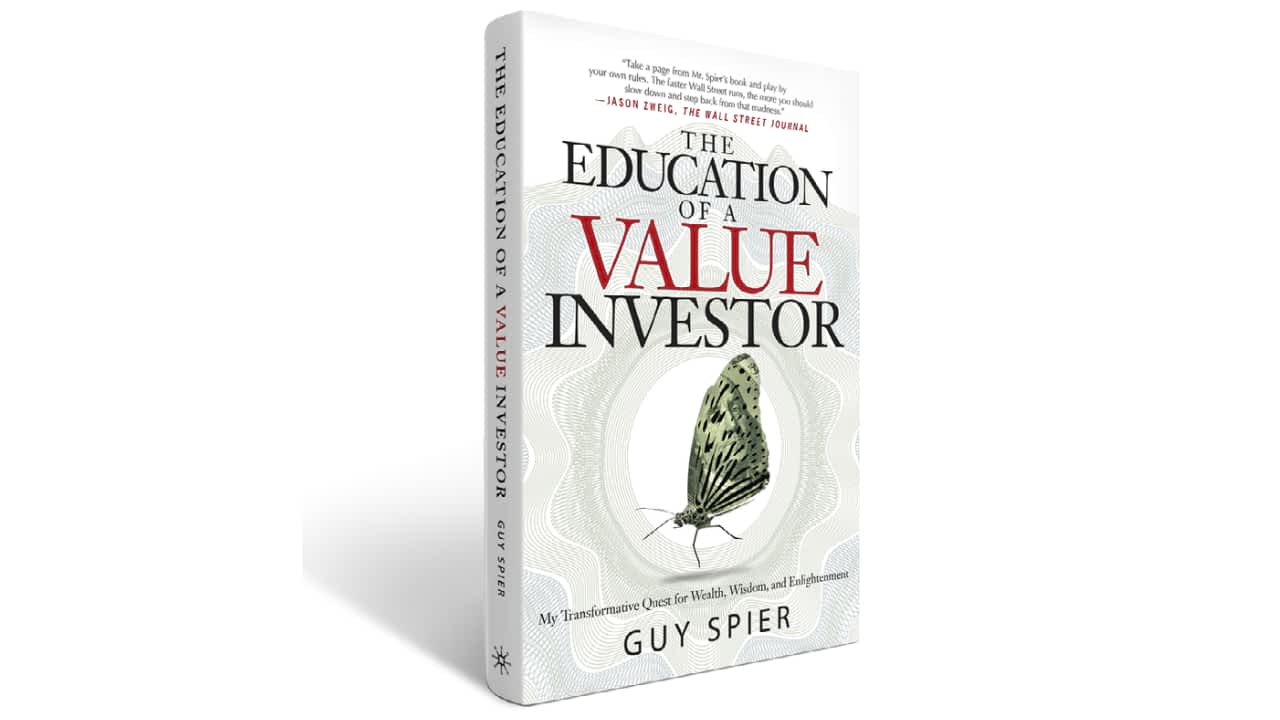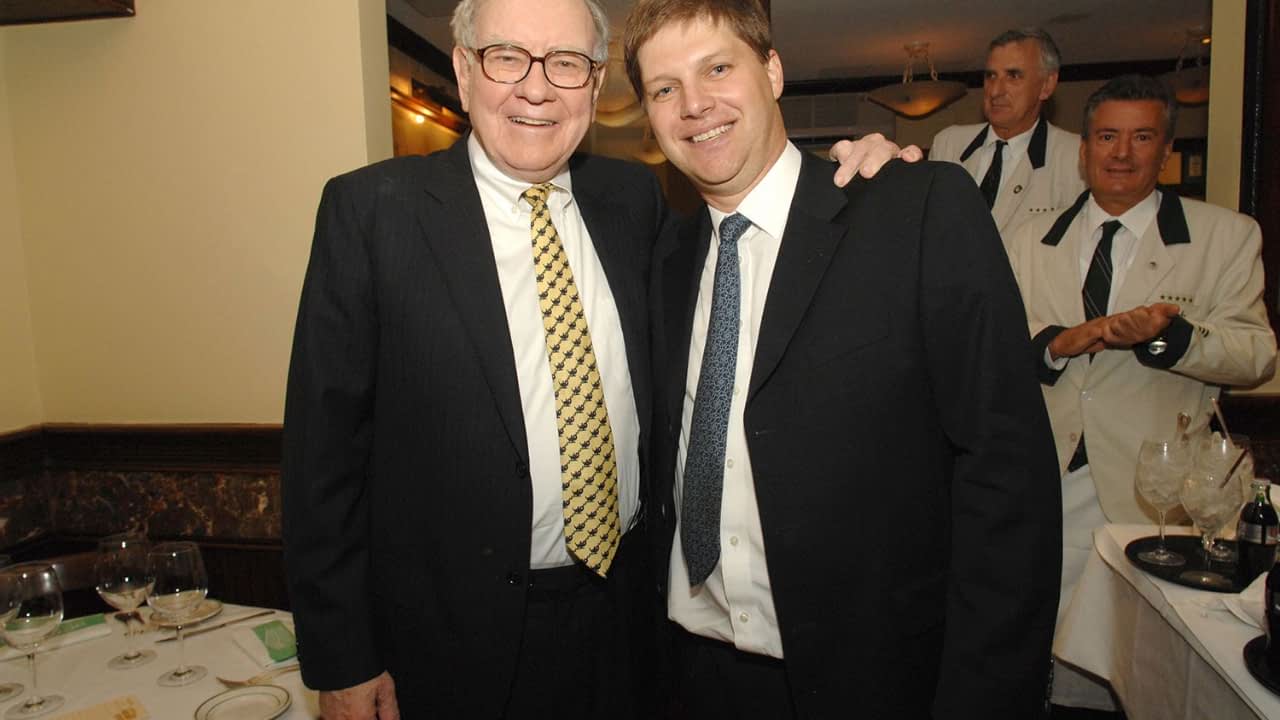
(9-minute read)
To make better investment decisions, it helps to develop a series of easy rules that you can apply consistently. This will reduce the number of mistakes and speed your process.
Here are the 9 rules and habits from one of the most famous investor, Guy Spier.
Guy Spier is a Zurich-based investor and author of a book on investing entitled The Education of a Value Investor.

He is well known for bidding US$650,100 with Mohnish Pabrai for a charity lunch with Warren Buffett on June 25, 2008.

1. Stop Checking the Stock Price
If you’re speculating on the latest hot cannabis or tech stock it may make some sense to follow every move: a brokerage firm issues a wildly bullish report and your stock suddenly surges by 20 percent as other speculators pile in.
But I’m trying to invest in a more measured way, buying stakes in companies that I’m looking to hold for 5+ years, if not indefinitely. As Buffett has said, when we invest in a business, we should be willing to own it even if the stock market were to close the next day and not reopen it for five years.
We also know from behavioral finance research by Daniel Kahneman and Amos Tversky that investors feel the pain of loss twice as acutely as the pleasure of gain.
So I need to protect my brain from the emotional storm that occurs when I see that my stocks — or market — are down. If there’s average volatility, the market is typically up in most years over a 20-year period. But if I check it frequently, there’s a much higher probability that it will be down at that particular moment.
Why, then, put yourself in a position where you may have a negative emotional reaction to this short-term drop, which sends all the wrong signals to your brain?
If you invest in businesses like this that are truly unstoppable, it shouldn’t really matter if you switch off the monitor, go to the beach, and read a book.
Spier checks his stocks no more than once a week!
The Rule: Check stock prices as infrequently as possible.
2. If Someone Tries to Sell You Something, Don’t Buy It
The problem is that your brain is awful at making rational decisions when confronted with a well-argued, detailed pitch from a gifted salesperson. So I adopted a simple rule that has proved extraordinarily beneficial.
When people call or email to pitch me anything at all, I reply in as pleasant a manner as possible, “I’m sorry. But I have a rule that I don’t allow myself to buy anything that’s being sold to me.”
The Rule: If the seller has a self-interest in me buying, I ain’t buying.
Maxim’s approach:
This is the reason I avoid most IPO’s unless a central or local government decides to sell some of their assets. Most of the time the government will be conservative with their numbers to avoid public outrage when citizens buy the shares.

3. Don’t Listen to The Management
The management such as CEOs tend to be the highly skilled salespeople who have the ability to win over their audience is the most important talent for them. It is not saying that CEOs or other top executives are immoral, it is merely their job to present company’s information that highlights the positive while discounting its business problems.
Exception to the rule: Berkshire’s Chairman and CEO, Warren E. Buffett, and a small but growing minority of CEOs who take seriously the idea of sharing what they would like to know if they were in their shareholders’ shoes.
Maxim’s view:
This is a logical extension of #2, considering most top management is partly compensated in company stock, it’s in their interest to tell a positive story about its prospects. That said, I don’t fully subscribe to this view because more information is useful to improve your understanding of what a company is about.
I don’t agree because if it is in your circle of competence then you can ask the management team the right questions and then judge how their strategy aligns with your industry vision.
If company management only goes on about how fantastic the prospects are with no need or acknowledgment of sticky economic conditions, you should lower their credibility rating. Quality management won’t hesitate to give you risks and that’s an important part of the investors’ checklist for a good investment. Think of it as a way of understanding, not the company, but the kind of people running it.
4. Do Investment Research in the Right Order
We know from Munger’s speech on the causes of human misjudgment that the first idea to enter the brain tends to be the one that sticks.
As he explained “the human mind is a lot like the human egg, and the human egg has a shut-off device. When one sperm gets in, it shuts down so the next one can’t get in. The human mind has a big tendency of the same sort….”
My routine is to start with the least biased and most objective sources. These are typically the company’s public filings, including the annual report and proxy statement.
These aren’t perfect, but they are prepared with a good deal of care and attention, and they are reviewed by auditors. The company doesn’t want to get sued, so there’s an incentive to produce financial statements that investors can rely upon.
Maxim’s approach:
I’ve found I have a ‘credibility meter’ for any source of information I consume. If it’s a press release in an advertiser-driven media outlet, that meter registers a low rating. Conversely a thoroughly researched piece in a reputable newspaper scores high.
Ask yourself: what is the source or the author of the article or research. What skin in the game does the author have and what do they stand to gain or lose from this information?

5. Discuss Your Investment Ideas Only with People Who Are Not Reliant on the Outcome
In my experience, the best people to speak with about investments aren’t just intelligent, but have an ability to keep their ego out of the conversation. As a result, these discussions tend to be playful and fun, and they don’t disturb my calm pond.
I’ve found that investment discussions work best when they adhere to three ground rules:
First, the conversation must be strictly confidential.
Second, neither person can tell the other what to do as this tends to make people feel judged, so they become defensive. In fact, it helps if you don’t even know whether the other person is thinking of buying or selling the same stock since that knowledge muddies the waters.
Third, we can’t have any business relationship because this could skew the conversation by adding a subtle or not-so-subtle financial agenda. Of course, what matters most in these conversations is mutual trust.
The goal of these conversations isn’t to reach the “right answer” or engage in intelligent debate. It’s to share our experiences and information. To achieve this, it helps to ask open-ended questions.
For example, instead of asking will a company meet its revenue target next year, it’s more useful to ask something like, “What needs to happen for them to generate a lot of cash next year?”
The Rule: Pool your knowledge with other investors, but stick with people who can keep their ego in check. If the other person happens to be Buffett, Munger, or Pabrai, so much the better.
Maxim’s approach:
I find it useful to share my ideas in the specialised online groups and then get feedback. You can clearly see if a person has been researching this company in the past and it could save you costly mistakes or prove you are on the right track.
6. Never Buy or Sell Stocks When the Market Is Open
Wall street (brokerages) is rewarded for activity. While I and my shareholders are rewarded for inactivity. To help myself function this way, I need a series of circuit breakers that slow me down and prevent me from acting emotionally.
So I have a rule, inspired by Mohnish, that I don’t trade stocks while the market is open. Instead I prefer to wait until trading hours have ended. I then email my broker, preferring not to speak with them directly, and ask to trade the stock at the average price for the upcoming day.
Maxim’s approach:
I put a reasonable limit share price on the online stock broking platform and then wait.

7. If a Stock Tumbles After You Buy It, Don’t Sell It for Two Years
Mohnish developed this rule to deal with the psychological forces: if he buys a stock and it goes down, he won’t allow himself to sell it for two years…it acts as a circuit breaker, a way to slow me down and improve my odds of making rational decisions.
Even more important, it forces me to be more careful before buying a stock since I know that I’ll have to live with my mistakes for at least two years.
That knowledge helps me to avoid a lot of bad investments. in fact, before buying a stock, I consciously assume that the price will immediately fall by 50%, and I ask myself if I’ll be able to live through it.
I then buy only the amount that I could handle emotionally if this were to happen.
Mohnish’s rule is a variation on an important idea that Warren has often shared with students. As Warren once put it, “I could improve your ultimate financial welfare by giving you a ticket with only 20 slots in it, so that you had 20 munches — representing investments that you got to make in a lifetime.
And once you’d punched through the card, you couldn’t make any more investments at all. Under those rules, you’d really think carefully about what you did, and you’d be forced to load up on what you’d really thought about. So you’d do much better.”
The Rule: Before buying any stock, make sure you like it enough to hold on for at least two years, even if the price halves right after you buy it.
Maxim’s approach:
The underlying principle on which the rule is based is sound – so every purchase is carefully considered. However, the reason this rule would not work for me all the time is because if the fundamentals of the company have changed then I will sell the stock sooner than 2 years.
Alternatively, I could find out that I made a big mistake and the stock is actually trading above its intrinsic value. Then I have to cut losses and sell it.
I’d rather admit that I was wrong than to let it simmer in the portfolio, accumulating opportunity cost.
8. Don’t Talk about Your Current Investments
Likewise, if you tell a child that you’re going to give them a treat, they’re liable to reply, “You promise?” They intuitively understand that you’ll find it hard to reverse course after taking a position.
I experienced this firsthand with a stock called EVCI, which I bought around 2003.
Within 18 months, it surged seven-fold, making it the most successful investment I had made up to that point. As we’ll discuss later, I should have sold all my shares. But I had given an interview to Value Investor Insight, extolling EVCI as an example of my investing skill.
As a result, I was publicly invested in the stock and couldn’t part with it even though it was no longer cheap. For various reasons, the stock subsequently halved. In retrospect, I could see that I would have been much better off if I’d never spoken about it since this would have given me more latitude to sell once the circumstances changed.
The Rule: Don’t say anything publicly about your investments that you may live to regret.
Maxim’s approach:
As a financial blogger and news curator on social media, I can handle that kind of weakness. I have no problem changing my mind. I have done it so many times before.
But you should be aware that when you talk about your investment idea, it could have an undesirable side effect in changing the way you look at the stock.
I prefer to announce my ideas and decision so they can be challenged or discussed. I feel no shame to admit publicly that I was wrong in the past and these were my lessons.

9. Create your own investing checklist
His list consists of about 70 items! Some of Guy’s include:
Is a top executive going through a tough time personally that might cloud his or her judgment?
Is there a key part of the company’s value chain that is vulnerable?
Is the stock cheap, not just based on what I think will happen in the future, but on where it is trading today?
What do you think about it? Tag me on your favourite social media (Facebook / Instagram / LinkedIn / Twitter).
P.S. I research and interview economists, NZ investors and profitable companies to find tools & tactics that you can use to achieve financial freedom.
➔ Join my private newsletter to be the first one to learn insider tips! Here are examples of what you’ll get. It’s FREE. You can unsubscribe at any time. I treat your email as my top secret.
IMPORTANT: This article is of general nature only and readers should obtain advice specific to their circumstances from professional advisers.